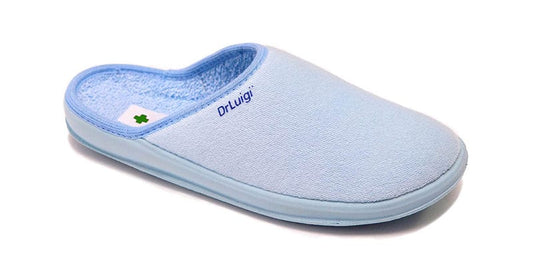Plantar fasciitis is a prevalent disease that produces inflammation and pain in the foot's heel and sole. The plantar fascia is a thick band of tissue that extends from the heel to the toes on the sole of the foot. When this tissue is torn or stretched, it can cause discomfort and inflammation in the foot's heel and arch.
Cause
Overuse or repetitive stress on the foot is frequently the cause of the ailment. Plantar fasciitis is commonly caused by the following activities:
- Jogging or running
- Standing for extended durations
- Wearing shoes with inadequate arch support
- Being overweight is a problem.
- Possessing high arches or flat feet
- Calf muscle tightness
- Having a work that necessitates a great deal of walking or standing on rough surfaces.
Symptoms
Plantar fasciitis symptoms include:
- Pain in the heel or bottom of the foot, especially while taking the first steps in the morning or after sitting for an extended period of time.
- Heel or bottom of the foot stiffness
- Tenderness or pain in the heel or sole of the foot
- Swelling in the foot's heel or sole
Risk factors
There are various risk factors that might raise your chances of getting plantar fasciitis, including:
- Obesity or being overweight.
- Flat feet
- Calf muscles that are too tight
- Shoes with inadequate arch support or worn-out soles
- Certain vocations or hobbies that require a significant amount of standing or walking on rough surfaces.
- Age, since it is more frequent in adults between the ages of 40 and 60.
Diagnosis
A doctor would often undertake a medical assessment and ask about the patient's symptoms and health records to diagnose plantar fasciitis. They may also request imaging tests, such as an X-ray or an MRI, to rule out other causes of heel pain, such as a stress fracture or a heel spur.
Treatment
Plantar fasciitis treatment often begins with conservative methods such as:
- Putting the afflicted foot to rest
- Apply ice to the affected area to reduce inflammation.
- Taking nonprescription pain medications such as ibuprofen or naproxen
- Wearing shoes with a padded sole and good arch support
- Stretching the calf muscles and plantar fascia
- Foot and ankle strengthening exercises.

If these precautionary steps do not bring relief, a doctor may suggest further therapies such as:
- Injections of steroids
- Extracorporeal shockwave treatment (ESWT) - type of shockwave therapy
- Surgery (rarely)
One of the most effective treatments for plantar fasciitis is physical therapy. Plantar fasciitis physical treatment often includes exercises to stretch and strengthen the muscles in the foot and ankle, as well as to increase plantar fascia flexibility. Calf stretches, plantar fascia stretches, and activities that promote ankle range of motion are examples of such workouts.
Maintaining a healthy weight and wearing shoes that fit properly and give appropriate arch support are also crucial. Running and leaping can also assist avoid plantar fasciitis by putting too much strain on the heel and arch of the foot. Plantar fasciitis may usually be managed conservatively and does not need surgery. However, in certain situations, the illness may last for months or even years, necessitating a more intensive treatment strategy. Plantar fasciitis symptoms can be effectively treated, and the risk of recurrent flare-ups lowered with correct care and treatment.





